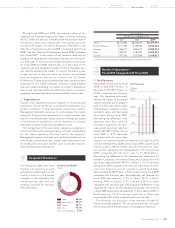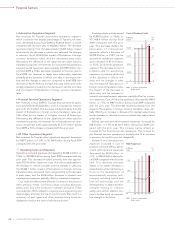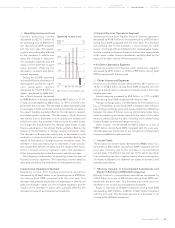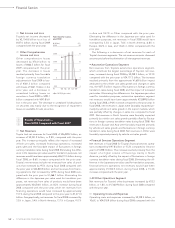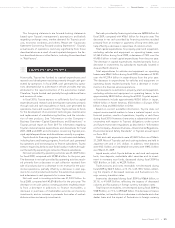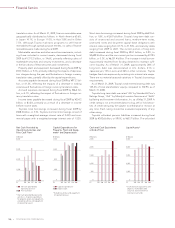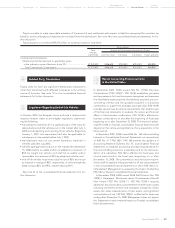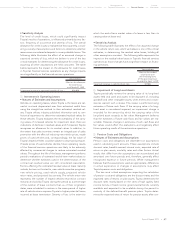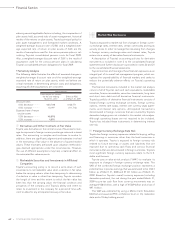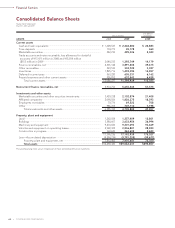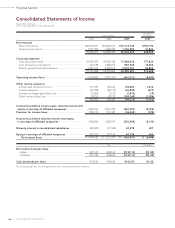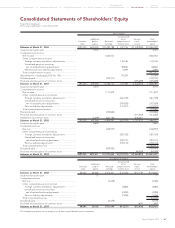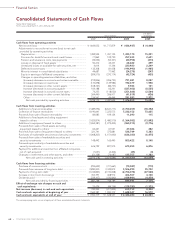Toyota 2009 Annual Report Download - page 61
Download and view the complete annual report
Please find page 61 of the 2009 Toyota annual report below. You can navigate through the pages in the report by either clicking on the pages listed below, or by using the keyword search tool below to find specific information within the annual report.
The Right Way Forward Business OverviewPerformance Overview Financial Section
Investor
Information
Management &
Corporate Information
Top Messages
Annual Report 2009 59
Related Party Transactions
Toyota does not have any significant related party transactions
other than transactions with affiliated companies in the ordinary
course of business. See note 12 to the consolidated financial
statements for further discussion.
Legislation Regarding End-of-Life Vehicles
In October 2000, the European Union enforced a directive that
requires member states to promulgate regulations implement-
ing the following:
• manufacturers shall bear all or a significant part of the costs for
taking back end-of-life vehicles put on the market after July 1,
2002 and dismantling and recycling those vehicles. Beginning
January 1, 2007, this requirement will also be applicable to
vehicles put on the market before July 1, 2002;
• manufacturers may not use certain hazardous materials in
vehicles sold after July 2003;
• vehicles type-approved and put on the market after December
15, 2008 shall be re-usable and/or recyclable to a minimum of
85% by weight per vehicle and shall be re-usable and/or
recoverable to a minimum of 95% by weight per vehicle; and
• end-of-life vehicles must meet actual re-use of 80% and re-use
as material or energy of 85%, respectively, of vehicle weight by
2006, rising to 85% and 95%, respectively, by 2015.
See note 23 to the consolidated financial statements for fur-
ther discussion.
Recent Accounting Pronouncements
in the United States
In December 2007, FASB issued FAS No. 141(R), Business
Combinations (“FAS 141(R)”). FAS 141(R) establishes principles
and requirements for how the acquirer recognizes and measures
the identifiable assets acquired, the liabilities assumed, any non-
controlling interest, and the goodwill acquired in a business
combination or a gain from a bargain purchase. Also, FAS 141(R)
provides several new disclosure requirements that enable users
of the financial statements to evaluate the nature and financial
effects of the business combination. FAS 141(R) is effective to
business combinations on and after the beginning of fiscal year
beginning on or after December 15, 2008. The impact of adopt-
ing FAS 141(R) on Toyota’s consolidated financial statements will
depend on the nature and significance of any acquisitions in the
future period.
In December 2007, FASB issued FAS No. 160, Noncontrolling
Interests in Consolidated Financial Statements—an amendment
of ARB No. 51 (“FAS 160”). FAS 160 amends the guidance in
Accounting Research Bulletins No. 51, Consolidated Financial
Statements, to establish accounting and reporting standards for
the noncontrolling interest in a subsidiary and for the deconsoli-
dation of a subsidiary. FAS 160 is effective for fiscal year, and
interim period within the fiscal year, beginning on or after
December 15, 2008. The presentation and disclosure require-
ments shall be applied retrospectively for all periods presented
in the consolidated financial statements in which FAS 160 is ini-
tially applied. Management is evaluating the impact of adopting
FAS 160 on Toyota’s consolidated financial statements.
In December 2008, FASB issued FASB Staff Position No. FAS
132(R)-1, Employers’ Disclosures about Postretirement Benefit
Plan Assets (“FSP FAS 132(R)-1”). FSP FAS 132(R)-1 requires
additional disclosures about postretirement benefit plan assets
including investment policies and strategies, categories of plan
assets, fair value measurements of plan assets, and significant
concentrations of risk. FSP FAS 132(R)-1 is effective for fiscal year
ending after December 15, 2009. Management does not expect
this Statement to have a material impact on Toyota’s consolidated
financial statements.
Toyota is unable to make reasonable estimates of the period of cash settlement with respect to liabilities recognized for uncertain tax
benefits, and accordingly such liabilities are excluded from the table above. See note 16 to the consolidated financial statements for fur-
ther discussion.
Toyota expects to contribute ¥95,270 million to its pension plans in fiscal 2010.
Yen in millions
Total Amount of Commitment Expiration Per Period
Amounts
Committed Less than 1 year 1 to 3 years 3 to 5 years 5 years and after
Commercial Commitments:
Maximum potential exposure to guarantees given
in the ordinary course of business (note 23) .................................. ¥1,570,497 ¥446,638 ¥724,503 ¥314,472 ¥84,884
Total Commercial Commitments .................................................. ¥1,570,497 ¥446,638 ¥724,503 ¥314,472 ¥84,884


